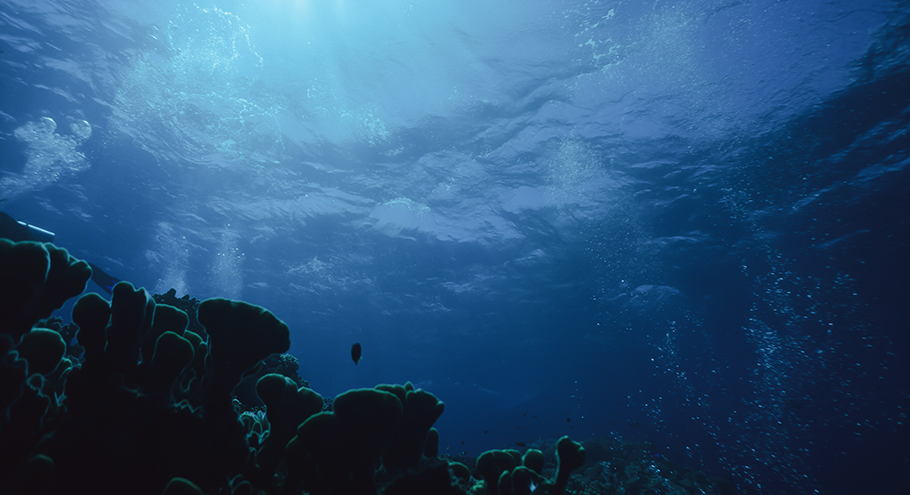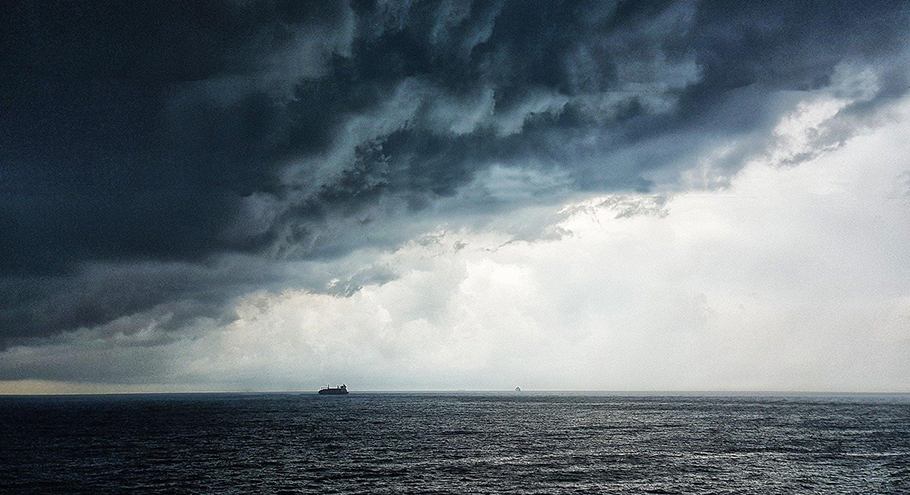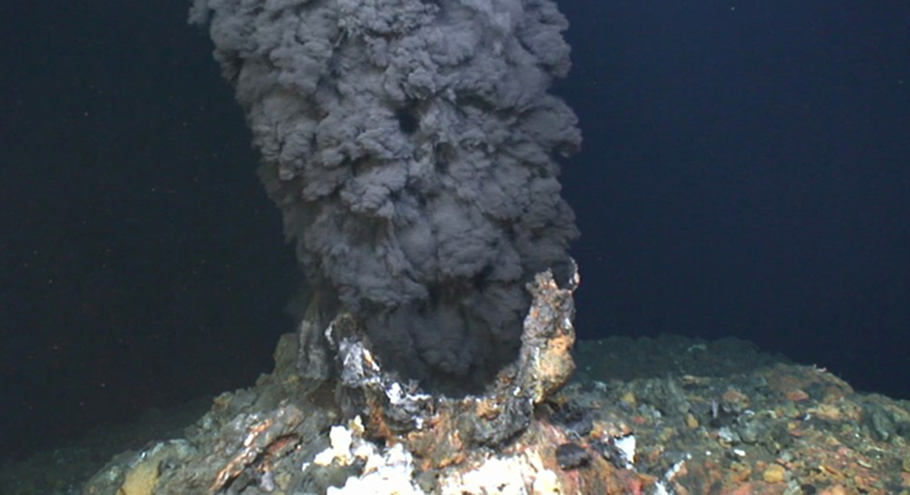Swings #4 : Between sky and sea, a story of dust
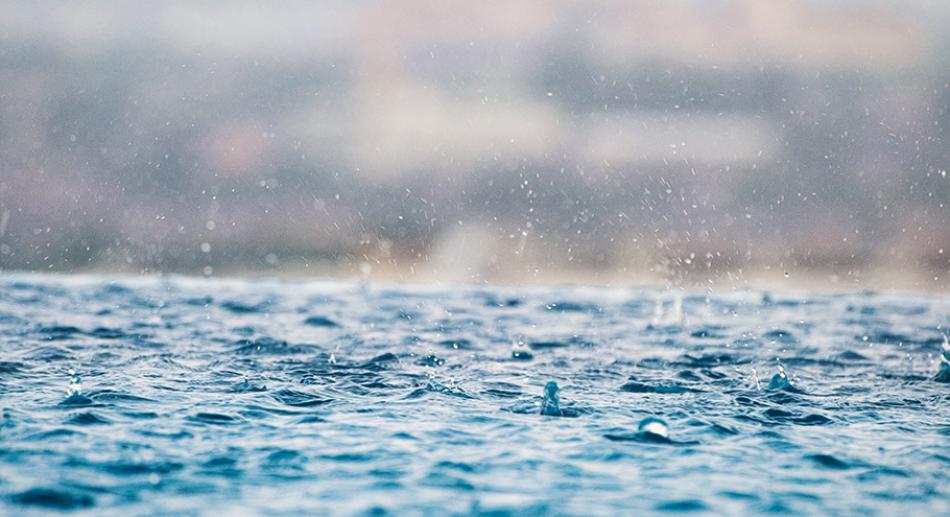
Removed from the continents and transported by the wind, atmospheric particles play an important role for marine life. Their flux from the atmosphere to the ocean is very difficult to measure. Fortunately, oceanographers can count on one chemical element : beryllium-7 !
By Victoria Lascaux, translated by Elena Masferrer.
Meteorological phenomena such as wind storms are at the origin of this dust present in the oceans. Strong winds over arid landscapes dislodge dust particles and lift them into the atmosphere where they are then transported long distances over the open ocean. The mineral dust from the land is mixed with particles (aerosols) emitted by human activities including fossil fuel burning and smelting of metal ores. This complex mixture of aerosol particles falls into the ocean waters and releases trace element micronutrients such as iron, zinc and copper. These elements are essential for the development of the phytoplankton, particularly in the Southern Ocean where the lack of iron limits their growth.
Southern Ocean marine life at the mercy of the weather
This is one of the challenges for the scientists on board the SWINGS mission: to understand the development of phytoplankton in an ocean rich in nitrate, phosphate, silicate but lacking in iron and other ocean "vitamins" (see the Swings #1 article). These elements, which are essential for photosynthesis, "feed" the oceans by coming from the seabed sediment close to the continents , from deep-sea hydrothermal sources, but also from atmospheric aerosols. The analysis of the flow of matter brought by the latter is complex because the dust disperses widely in the atmosphere, is deposited by wet and dry deposition processes, and can then settle and dissolve at different speeds in the water. Generally speaking, it is very difficult to measure this flux of aerosols into the ocean because it is necessary to establish the deposition speed of this matter and one cannot use a chronometer to measure at a depth of 300 or 3000 m! This is where natural radioactive tracers come into play. Indeed, William Landing and Christopher Lopes, researchers at Florida State University (FSU) and Florida International University (FIU) are collecting samples to analyse beryllium-7, a radioactive tracer produced in the atmosphere when particles of cosmic radiation interact with oxygen and nitrogen atoms. Like atmospheric dust, it is deposited on the surface of the ocean and then penetrates into it.
"The advantage of beryllium-7 is its short half-life. Thus, the radioactivity that we detect in the upper ocean necessarily comes from the atmosphere and cannot have been transported by sea currents"
says William Landing.
A "simple" Rule of Three
The quantity of beryllium-7 measured in the collected seawater makes it possible to calculate the quantities of iron, but also zinc, nickel and copper "fallen from the sky", because scientists know the proportion of iron present in atmospheric dust in comparison to the quantity of beryllium-7.
"An estimate of the flow of beryllium-7 is essential to assess the flow of particles. Then, it will be sufficient to make a rule of 3"
sums up William Landing.
However, before these calculations can be made, water sampling requires colossal amount of resources.
Deploying the pump and the CTD-rosette © Laurent Godard
Several cubic metres sampled for such small particles
The main difficulty is that beryllium-7 is as rare as it is useful. In order to collect the samples that will allow its measurement, impressive instruments are indispensable. For example, setting up a pump hanging on a submersible hose is the first step. Once submerged, this pump collects over 600 litres of water at various depths, up to a maximum of 200 metres deep. This operation is carried out at 5 to 6 depths at each station in order to collect as much water and beryllium-7 as possible before it disappears by radioactive decay as it moves away from the surface.
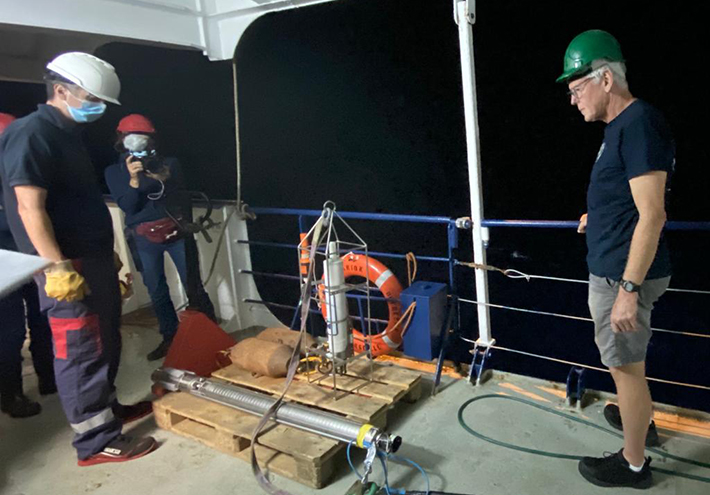
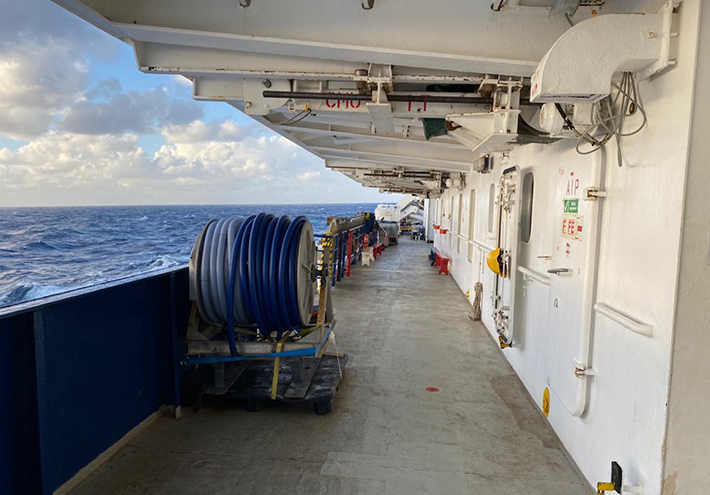
On the deck of the vessel, large 700-litre tanks are installed to collect the water that will be pumped up from each depth. Beryllium-7 is collected from these huge canisters by passing the seawater through acrylic wool cartridges impregnated with iron oxides which absorb the beryllium.
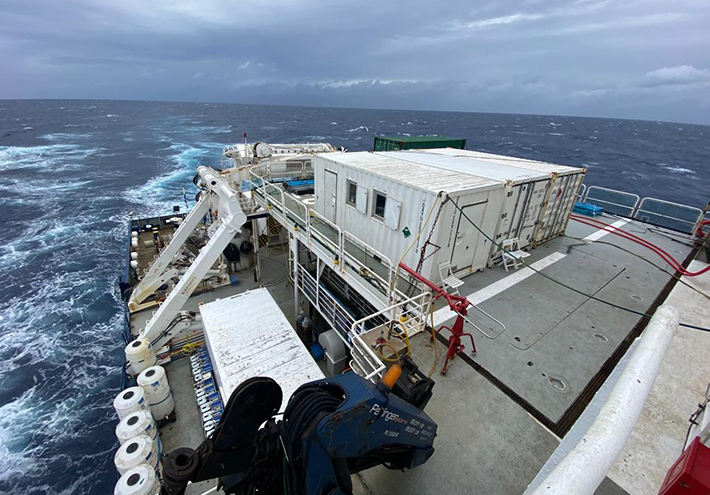
From the date of collection, a race against the clock is launched. Since beryllium-7 is radioactive, its radioactivity is divided by two every 53 days. On board, the acrylic wool samples are dried and stored for return to the shore-based lab. At the same time, aerosol samples are collected to measure the beryllium-7 and trace element concentrations in the air over the water. Comparing the concentrations of beryllium-7 in the air and in the upper ocean allows us to calculate the aerosol deposition velocity and therefore the flux of each essential trace element to the ocean where the phytoplankton are waiting for the trace element nutrients they need to grow. These samples can only be analysed on land using instruments that are too fragile and expensive to be taken on board : gamma spectrometers detect and measure the gamma radioactivity emitted by beryllium-7. Atmospheric dust present in the pumped water will also be analysed by mass spectrometry. This research requires a great deal of patience and team spirit.
"We are collecting beryllium-7 samples that will help us quantify aerosol deposition of trace elements" William Landing © Laurent Godard.
PORTRAIT
William Landing, a scientist as free as air

What is your scientific background?
In the 1970s, I was a chemistry student at the University of California at Santa Cruz. A professor introduced me to the chemistry of the ocean and I decided to go down this path. After a Master's degree at the University of Washington, I did my PhD at the University of California at Santa Cruz, then I did a post-doctorate in Sweden. Then I was hired by Florida State University. I have been teaching there for 35 years. Now I am retiring, but I have the opportunity to continue my research.
What is your greatest scientific pride?
While I was doing my post-doctorate in Sweden, I discovered a process to extract trace elements such as iron or manganese from small volumes of seawater and measure their concentration. This process was later widely used by researchers all over the world. Then, in the 1990s, my students and I demonstrated that the mercury pollution in the Everglades, Florida, did not come from local sources, but from background air pollution throughout the Northern Hemisphere.
What is your role on board?
One of SWINGS' goals is to measure how fast micronutrient trace elements pass from the atmosphere to the ocean and become available to living organisms. I'm in charge of the atmosphere part. My role is to measure the concentration of these elements in the air, rainwater and snow.
What does a typical day look like?
What I always tell my students is that, on board a research vessel, there are only three things to do: sleep, eat and work. So if I'm not sleeping or eating, I'm working. I deploy the filters, I collect the samples, and process them for transport back to the lab at home. I can't do the analyses on board, but I have to make sure that I get the best possible atmospheric samples. I also try to help my other shipboard colleagues in their tasks.
What do you like about this adventure?
It's a chance to be on board a cruise in the presence of some very talented researchers. It's not often that you get to have such high-level discussions, for such a long time, with some of the best researchers in the world. And then there is the beauty of nature. The night sky, the whales, the birds, the icebergs. For me it's fantastic to be here. Ah, and there is also the fact that during the mission I don't have to answer e-mails, correct exams, or write reports!
What do you do to escape on board?
I read a lot, and I try to exercise. I also bring my saxophone with me.
What books did you take with you?
I have a Kindle that I filled with books. I took a lot of science fiction and detective stories.
DIARY
31 January
"A pink and blue dawn accompanies us, the snowy peaks of Marion Island are in the North-West. Cheerful smiles light up the faces of our South African colleagues. The weather is much calmer than in the previous days"
says Catherine Jeandel, a CNRS researcher and co-chief scientist of SWINGS.
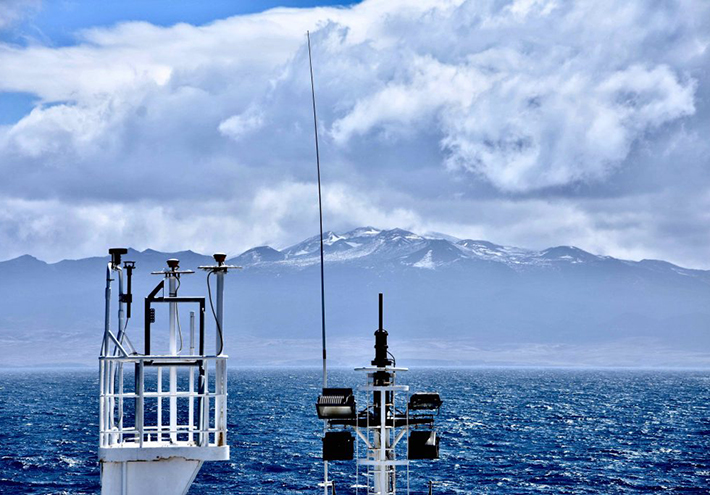
A busy day awaits our scientists, the programme for the day: 3 stations at depths of 3000 m, 1500 m then 300 m. We have to motivate the teams, deploy the clean and standard rosettes, sampling, filtering, analysis... The stations are only a few miles distance from each other, a sustained rhythm is required. These multiple deployments of the day have brought the scientists closer to Prince Edward Island.
Later in the evening, a drizzle invited itself during the search for chlorophyll plumes. They testify of phytoplankton fertilization by the eroded products of the islands... the teams will continue to work all night long under a heavy and icy rain-snow, not very pleasant!
February 1 : Reward in the early morning with the emergence behind the clouds of Prince Edward Island, a comforting moment for the night workers, and motivating for the day workers.
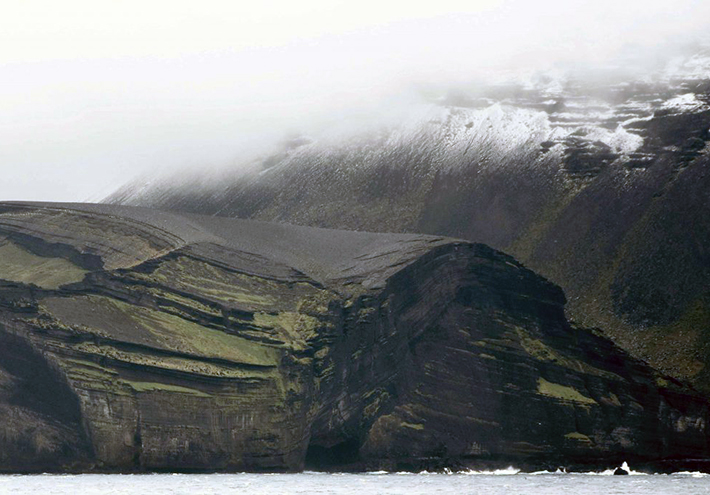
In order to please the crew, the captain decides to sail along the island, emotions guaranteed.
"We won't be coming back, or not for a long time. These small islands lost in the great southern waters exude a certain magnetism and a desire for wild hikes that will feed our dreams for a long time to come"
says Catherine Jeandel.
Henceforth, let's head for the Crozet Islands! A strange but important zigzag trajectory to cross the oceanic currents and fronts, a sort of border between two distinct oceanographic regions, which are characterised by different temperatures and salinities. The best for all the researchers on board.
To be continued...
To learn more, follow the cruise diary : https://swings.geotraces.org

